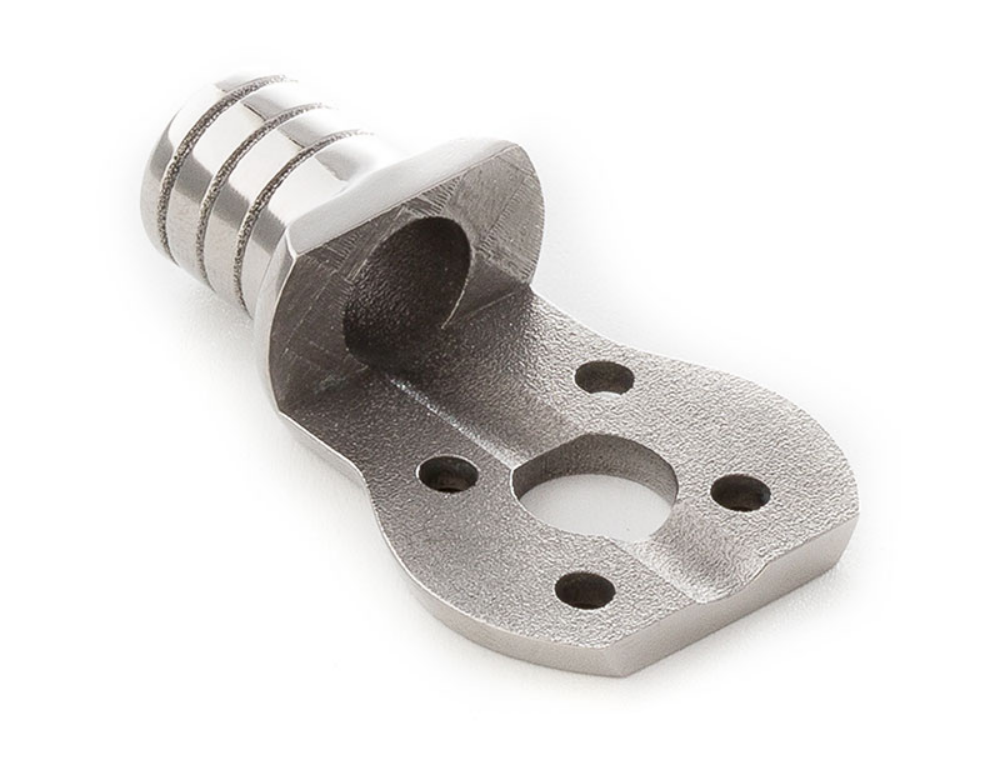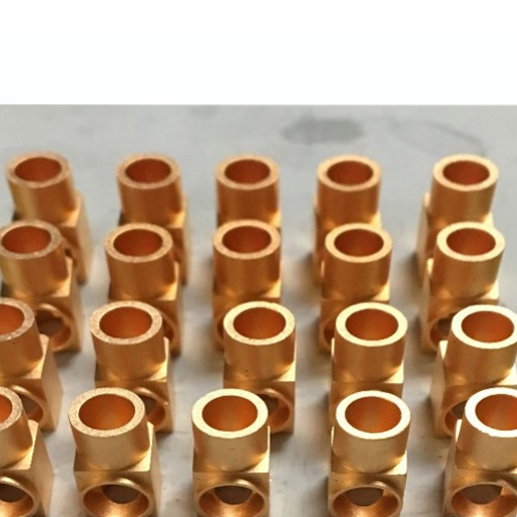Finding the Right Corrosion-resistant Metals
Although oxygen keeps humans and practically every other lifeform on Earth from going the way of the dinosaurs, it’s actually a toxic, highly corrosive element more suitable for sending rockets to space than for sustaining life. It’s only because our bodies have evolved to make use of oxygen in some pretty spectacular ways, and the fact that the atmosphere contains such a small amount of this nasty substance—roughly 21 percent by volume, with most of the rest nitrogen—that we’re able to exist at all.
Many metals have similar superpowers. While iron and its offspring carbon steel will quickly rust if not protected with paint, plating, and similar coatings, others such as aluminum and stainless steel react with the oxygen in the air to form a thin protective shell known as a passivation layer. More on that shortly.
We won’t delve into the electrochemical mechanisms that cause rust in all its various forms to develop—it’s a nerdy topic, of interest mainly to metallurgists and material scientists. We will point out, though, that it happens more quickly in the presence of humid air and water, especially saltwater, and that even the tallest building and mightiest bridge will eventually fail because of it.
The good news is that a broad selection of corrosion-resistant metals is available, and we machine, 3D print, and fabricate the most often used ones. Here’s a quick overview of each, along with a few application examples:
Aluminum
We carry four grades of aluminum, starting with 6061-T651, a general-purpose alloy that is readily milled, turned, laser-cut, bent, formed, and welded. Then there’s 7075-T651, a go-to for the aerospace industry, where it sees a range of mechanical uses. Although our sheet metal service does not process this more robust grade of aluminum, it routinely fabricates 5052-H32, a magnesium-bearing aluminum known for its superior formability. And for 3D printed parts, there’s AlSi10Mg, a tough grade of aluminum long used for castings. Oh, and the thin, protective layer mentioned earlier? In aluminum, it’s called aluminum oxide, an exceedingly hard chemical compound found in many grinding wheels. If you want a tougher coating, you can turn to anodizing, too.

This element is an excellent choice for a host of applications. Its many alloys are strong, lightweight, non-magnetic, and electrically conductive, making them suitable for everything from cooking utensils and lawn furniture to machinery hardware, electronics housings, and scientific instruments.
This bead-blasted aluminum flange was peppered with small, glass beads, yielding an attractive, smooth appearance and feel. Corners are smoothed out, as well, to avoid sharp edges on this machined part. As with all aluminum parts, it is highly resistant to corrosion.
Titanium
Let’s start by mentioning that this lightweight metal is pricey. If that doesn’t bother you, read on! Metallurgists will tell you it’s just as strong as steel but at half the weight; and twice the strength of aluminum with one-and-a-half times the weight. Metal trivia aside, titanium is also one of the most corrosion-resistant metals thanks to its generation of a titanium oxide coating when oxygen is present (which it almost always is).

We rightfully label Ti-6Al-4V titanium as a “workhorse alloy” for its widespread use in medical implants, aircraft engines, power generation facilities, sporting equipment, and other applications, and extensively use this important metal in machining and 3D printing.
Polishing titanium has no effect on its toughness or corrosion-resistance. It does do a great job of brightening the surface, and best of all, titanium is also resistant to many acids, saltwater, and chemicals.
Stainless Steel
This steel alloy gets its protective layer from chromium oxide. That’s because the element that gives all stainless steels their name is chromium. For instance, 303 stainless contains between 17 percent and 19 percent chromium, around 9 percent nickel, a smattering of trace elements like manganese and phosphorus, and the balance iron. There’s also a tiny amount of sulfur, which makes 303 one of the most machinable stainless steels but slightly less corrosion resistant. Next up is 304, another “general-purpose” grade, followed by 316 stainless, a tougher, more heat, wear, and corrosion-resistant grade thanks to 2 percent molybdenum. Each of these is also available in “low carbon” grades (as in 304L and 316L) that are a bit softer and slightly more weldable than their counterparts. Finally, here comes another aerospace favorite, 17-4 PH (short for precipitation hardening). Unlike 300-series stainless steels, 17-4 can be made quite hard through heat treatment, so is often found in gas turbines, petrochemical applications, and aircraft parts.
Cobalt Chrome
This alloy boasts many of the same mechanical attributes as stainless steel but is slightly stronger and more wear resistant. Thanks to its biocompatibility, you might be wearing a cobalt chrome wedding band on your hand, dentures in your mouth, or a replacement joint in your knee or hip, although cobalt chrome is also common in many industrial applications such as furnace liners and engine components. And while the stainless steels just listed are regular visitors to the CNC mills, lathes, sheet metal machinery, and direct metal laser sintering (DMLS) at Protolabs, the cobalt chrome superalloy Co28Cr6Mo is currently limited to DMLS 3D printing.
Inconel
This is another unique DMLS-only offering. That’s because this superalloy is quite challenging to machine (like all superalloys) but is readily 3D-printed into parts as large as 31.5 in. x 15.7 in. x 19.7 in. (400mm x 800mm x 500mm) on some of our printers. Like 17-4 stainless steel, Inconel 718 is precipitation-hardenable but contains far higher amounts of nickel (around 10x as much) along with 5 percent or so of the refractory metal niobium and nearly that much molybdenum. This explains its great strength and high heat capabilities, making it a preferred material for any component subject to temperatures up to 1,300°F (700°C) and extreme mechanical loading. And yes, it’s resistant to corrosion of all kinds.
Brass

An alloy of copper and zinc, this sits at the opposite end of the machinability chart from Inconel, titanium, and cobalt chrome. That doesn’t make it any less valuable, though, especially to those looking for a corrosion-resistant, easily machined metal that’s useful for plumbing fixtures and adapters, bearings, heat sinks, threaded fasteners, and any other parts requiring high electrical and thermal conductivity. Protolabs carries two types of brass. So-called free-cutting brass C360 gets its name from a trace amount of lead, which eases machining and makes this yellow metal quite popular for high-volume screw machine work. Similarly, alloy C260 is known as cartridge brass for its excellent formability and subsequent use in bullet cases and other “deep drawn” commodity components. For turned and milled parts, however, or those made from sheet stock, brass is an attractive alternative with many admirable qualities, not the least of which is its good looks.
Look closely at this machined brass flange to see its broken-edge finish. Parts with broken edges have radii or chamfers machined into them to avoid sharp, potentially dangerous edges, softening their appearance.
Copper
Finally on our corrosion-resistant hit parade, copper comes in two grades—C101 and C110. Each has distinct mechanical properties, but all rank among the planet’s most electrically—and thermally—conductive materials. Copper overlaps to some extent with brass in terms of its various applications, but is generally more formable, less machinable, and a fair bit more expensive. It’s a great choice for high-performance heat exchangers and electronic or electrical applications (EMI shielding, for instance). And thanks to its anti-microbial properties, copper is enjoying increased use in hospital equipment.
Copper offers an aesthetically pleasing product that can corrode over time, but in a different way. Over time, carbon and oxygen molecules attach to the copper to form a layer of copper carbonate, or patina, an attractive and protective blue-green surface.
Seen enough? It should be evident now that we have plenty of corrosion-resistant metals to choose for your next project. And there is no shortage of ways to quickly convert these metals into precision parts, whether it’s via CNC turning or milling, sheet metal fabrication, or metal 3D printing.
Additionally, we encourage you to review the product data lists provided on our website for more detailed information. If you have any questions, please drop us a line. Our application engineers are always available to assist you by calling 0086-755-8273-7469 or emailing [email protected].

